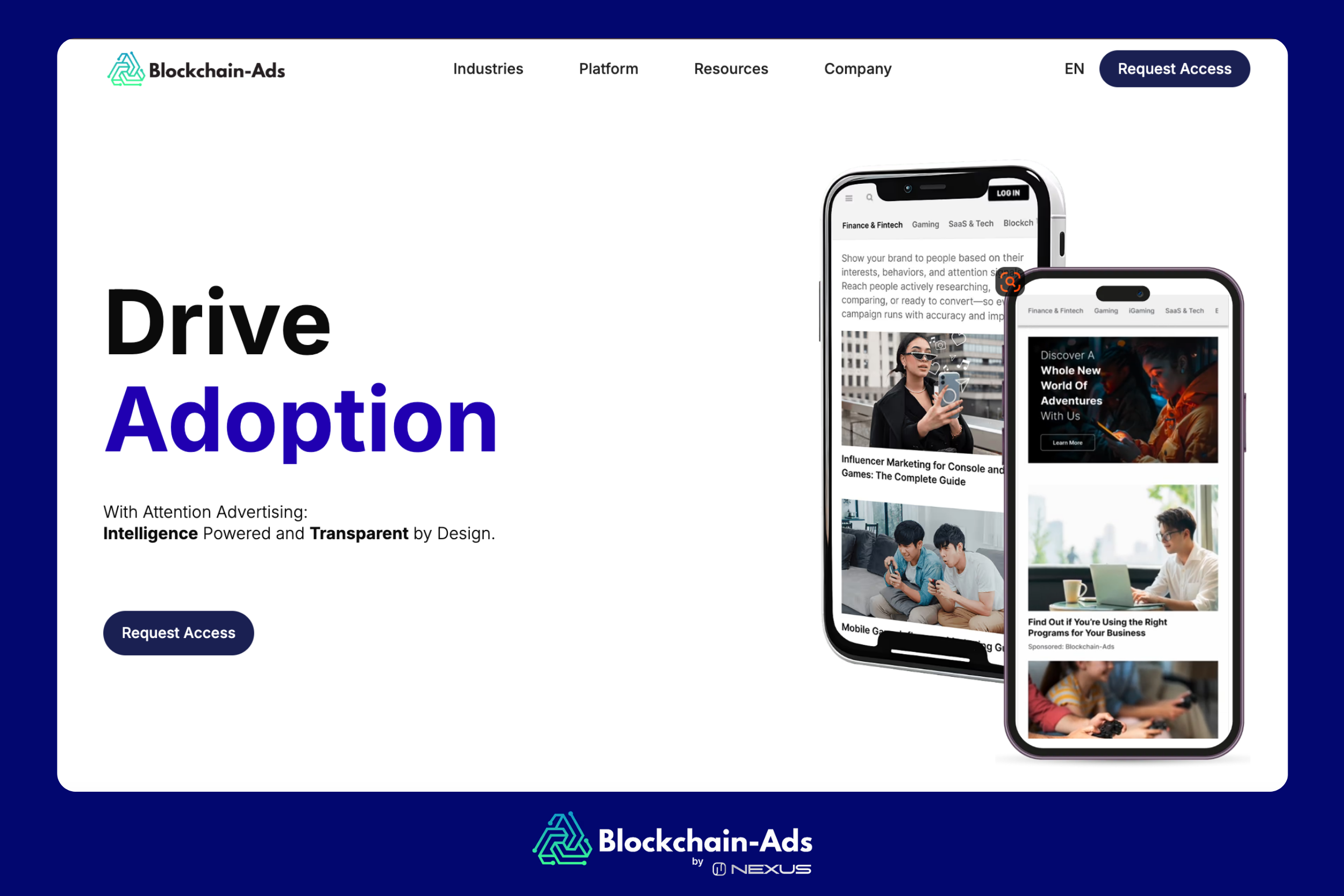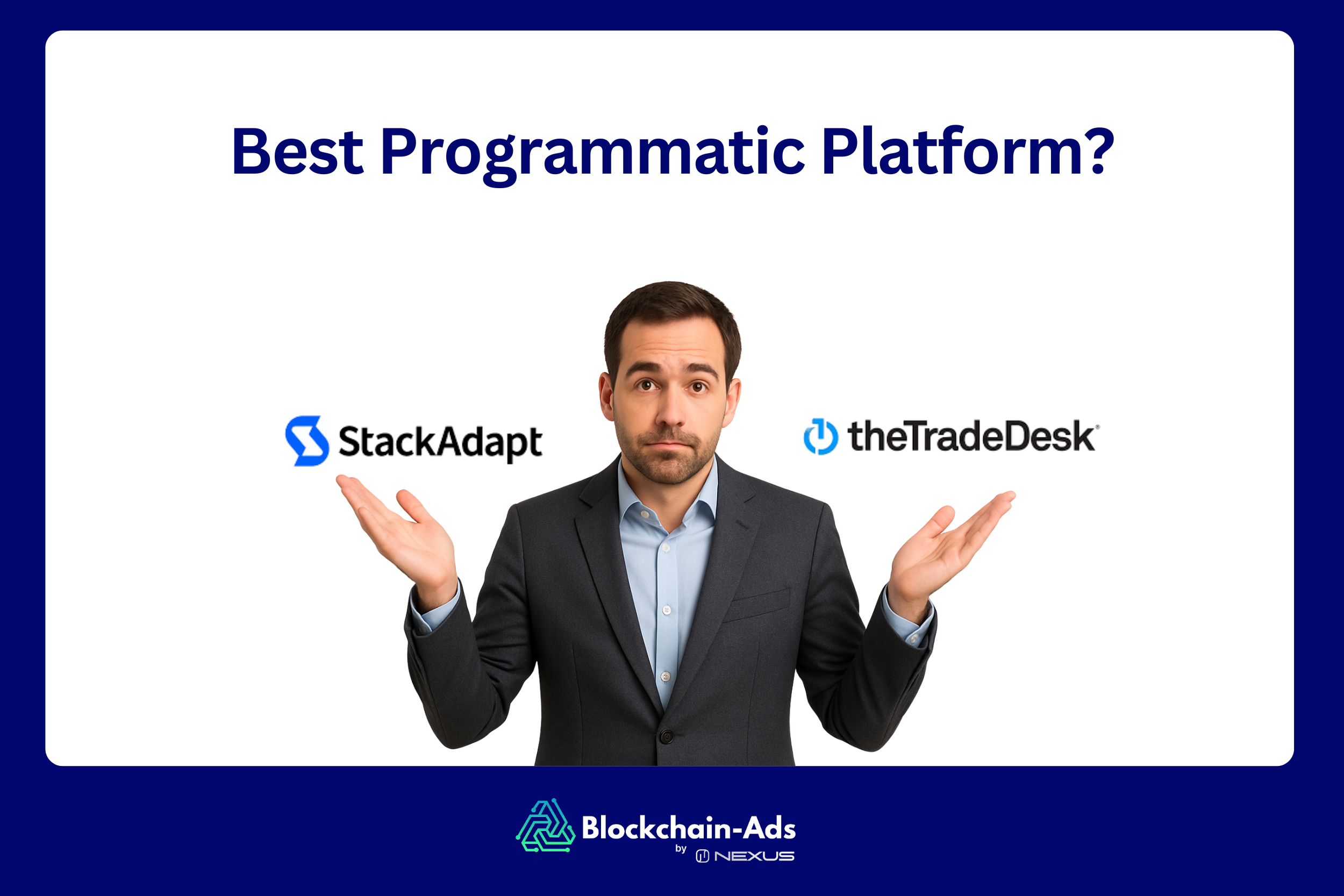StackAdapt vs The Trade Desk: Which Programmatic Platform Is Right for You?
Heading
- Cointelegraph Formula offers various ad formats to 8 million monthly readers across 190+ countries, leveraging its trusted name in crypto.
StackAdapt and The Trade Desk are two of the most widely used programmatic advertising platforms, each built for different types of marketers, budgets, and campaign requirements.
StackAdapt is known for its intuitive workflow and AI-powered optimizations, making it a strong fit for teams that want multi-channel reach without steep learning curves.
The Trade Desk caters more to enterprise advertisers and large agencies that need deep channel scale, premium inventory access, and granular bidding controls.
In this article, we compare StackAdapt and The Trade Desk across the factors that matter most to media buyers, including:
- Inventory Access & Channel Breadth
- Audience Targeting & Data Access
- Bid Control & Optimization Tools
- Reporting, Attribution & Transparency
- Creative Support & Ad Format Flexibility
- Ease of Use & Workflow Integration
- Account Structure & Support Model
- Industry Fit, Compliance & Vertical Coverage
And because many advertisers evaluating these platforms are also exploring alternatives outside the mainstream DSP ecosystem, we’ll also touch on when a third option like Blockchain-Ads can be a better fit.
StackAdapt vs The Trade Desk: Inventory Access & Channel Breadth
Any programmatic campaign requires inventory and channel access. These help determine where your ads can appear and how many touchpoints you can actually create with your audience. So, the more diverse and premium the inventory is, the greater your reach and flexibility to execute omnichannel campaigns that will meet your objectives.
StackAdapt will provide you with strong access to different inventory sources with a particular strength in native and new formats like in game and DOOH. Its partnerships and dedicated team will help marketers get custom inventory opportunities. This makes it great for brands looking for flexibility and breadth across different channels.
On the other hand, The Trade Desk is created for scale and maximum reach. It will connect buyers to broad channels and premium publishers globally. Besides, it has deep integrations for exclusive deals and advanced brand safety controls.
Takeaway: You may consider StackAdapt if you need flexibility and strong native channel support. Choose The Trade Desk if you’re prioritizing maximum inventory scale and premium placements.
StackAdapt vs The Trade Desk: Audience Targeting & Data Access
Your targeting tools help determine how precisely you reach out to the right target audience. These software are the ones that also help personalize messaging and optimize spend. The more advanced and flexible they are, the more directly they impact ROI.
Basically, The Trade Desk has deeper data integration and access to more third-party data partners. It also supports UID2 which helps in future proofing against cookie loss. Meanwhile, StackAdapt offers user-friendly contextual tools with custom segments.
Takeaway: If you’re working with advanced CRM data and want deep segmentation, then you’ll need to consider The Trade Desk. For flexible and campaign targeting experience without the need for data team dependency, then choose StackAdapt.
StackAdapt vs The Trade Desk: Bid Control & Optimization Tools
Bid control management and optimization tools will help determine how efficiently you spend your budget and maximize your campaign outcomes. Digital advertising platform with advanced tools means smarter bidding, better pacing and ultimately high return on ad spend.
The StackAdapt is a demand side platform that focuses on AI-driven and outcome-based bidding that continuously reallocates budget towards top-performing placements. This makes it ideal for marketers who want to optimize without the need to micromanage every detail. The Trade Desk, on the other hand, offers more control. These include custom bidding algorithms, manual and powerful optimization levels. This control level is, therefore, great for experienced buyers.
Takeaway: You can pick StackAdapt if you need efficient and automated optimization with minimal complexity. If you need more control over every aspect of bidding and optimization, then choose The Trade Desk.
StackAdapt vs The Trade Desk: Reporting, Attribution & Transparency
What you can measure is possible to improve. An advertising platform with an advanced reporting and attribution system will help you pinpoint the strategy that’s working and what needs fixing across channels and devices.
StackAdapt often delivers clear and actionable reporting. Its focus is on performance monitoring and attribution, particularly for B2B marketers. However, some users still complain when creating a customized report at the campaign level. The Trade Desk offers transparent reporting and advanced attribution models. It boasts full visibility into every aspect of campaign performance.
Takeaway: If you need easy and actionable insights, you can consider StackAdapt. Meanwhile, those who need deep, customizable and full transparency can consider The Trade Desk advertising platform.
StackAdapt vs The Trade Desk: Creative Support & Ad Format Flexibility
Creative options can limit or unlock your campaign potential. They determine how well your ads can adapt to different channels and engage different audiences. So, having the right formats and support to build them matters.
StackAdapt boasts a wide range of ad formats with a particular strength in native advertising and emerging channels such as in-game and DOOH. It is designed for creative flexibility and innovation. The Trade Desk basically covers all the standard formats and channels. It’s created for scaling and compatibility instead of specialized creative features.
Takeaway: If your campaign interests require a demand side platform with creative flexibility and different formats, try StackAdapt. For reliable and large-scale delivery across standard formats, choose The Trade Desk.
StackAdapt vs The Trade Desk: Ease of Use & Workflow Integration
No matter how powerful an advertising platform is, it will be useless if your team can’t get campaigns live without friction. It affects how quickly teams can launch, optimize and scale campaigns, which is crucial for productivity and minimizing errors.
The best thing about StackAdapt is that it has an intuitive interface and an accessible workflow. This makes it great for new users and small teams to get started right away. The Trade Desk, on the other hand, has a lot of powerful features, so expect a complex learning curve. It is ideal for teams with efficient programmatic experience who require advanced customization and integration capabilities.
Takeaway: Choose StackAdapt if you prioritize simplicity and a quick onboarding experience. If your team is ready to invest time in mastering a complex but powerful advertising platform, then pick The Trade Desk.
StackAdapt vs The Trade Desk: Platform Support & Account Structure
The type of support offered by an advertising platform can make or break your overall experience, especially if there is a campaign challenge. Also, the account structure will share how you manage clients, brands or business units. In short, these two will influence the scalability, collaborations and how well a DSP fits into your organization’s process.
StackAdapt offers flexible account structures, which makes it great for small agencies or a growing business. The Trade Desk is designed for larger organizations and offers support for multi channel reach, multi-team workflows and global campaigns.
Takeaway: If you have a small to mid-sized team and are looking for flexibility and support, StackAdapt can be a great fit. For larger organizations that need advanced account management and global scale, The Trade Desk is worth trying.
StackAdapt vs The Trade Desk: Industry Fit, Compliance & Vertical Coverage
Industry fit and compliance are important factors you must consider before settling for any site. Why? Because they determine whether a DSP can handle your sector’s unique needs smoothly without issues.
Both StackAdapt and The Trade Desk offer broad industrial coverage and standard compliance tools. If you’re in an industry requiring full compliance, it is better to find other popular platforms.
Takeaway: You can use both platforms for mainstream industries. However, if you operate in a restricted category, like CBD, adult, gaming, or crypto, it will be wise to consider other platforms.
Using Blockchain-Ads as an Alternative to StackAdapt and The Trade Desk

Blockchain-Ads functions as a next-generation DSP built specifically for industries where other programmatic platforms fall short. Instead of relying on third-party cookies or limited bidstream data, Blockchain-Ads has a proprietary identity graph of 420M+ global user profiles, enabling precise targeting at scale across inventory that traditional DSPs struggle to reach.
Unlike StackAdapt or The Trade Desk, Blockchain-Ads serve regulated and highly restricted industries such as finance, gambling, CBD, adult, crypto, and politics. Despite serving these high-restriction verticals, Blockchain-Ads provides the same programmatic capabilities you’d expect from a mainstream including:
- real-time bidding
- audience segmentation
- lookalike modeling
- frequency control
- device graph matching
- AI-optimized bidding
Across campaigns, advertisers typically see 22–57% lower CPMs, 0.8–35% lower CPAs, and 3–6× stronger ROAS compared to traditional DSPs, largely due to enhanced user-level data and minimized auction competition. The only limitation is that Blockchain-Ads focuses exclusively on open-web and in-app programmatic, it doesn’t support search inventory or walled-garden placements.
However, it offers full support for native, display, video, rewarded video, push notifications, rich media, and CTV formats, providing comprehensive reach across the mid- and lower-funnel.
Final Thoughts
StackAdapt and The Trade Desk are both powerful DSPs serving different advertiser needs. Choose StackAdapt if you want an intuitive platform focused on native-first campaigns and mid-market flexibility. Opt for The Trade Desk when managing high-budget campaigns requiring deep data control, premium inventory access, and advanced customization.
Not sure which fits best? Explore our comprehensive list of the best programmatic advertising platforms to discover how other top DSPs compare.
Qualify and get acess to Blockchain-Ads
Lorem ipsum dolor sit amet, consectetur
Quick Definition

Parla con alcuni dei nostri attuali partner
Visualizza tutte le storie di successo

Reach 12M+
Engaged Web3 users across 10,000+ websites and 37 blockchains.






.png)





